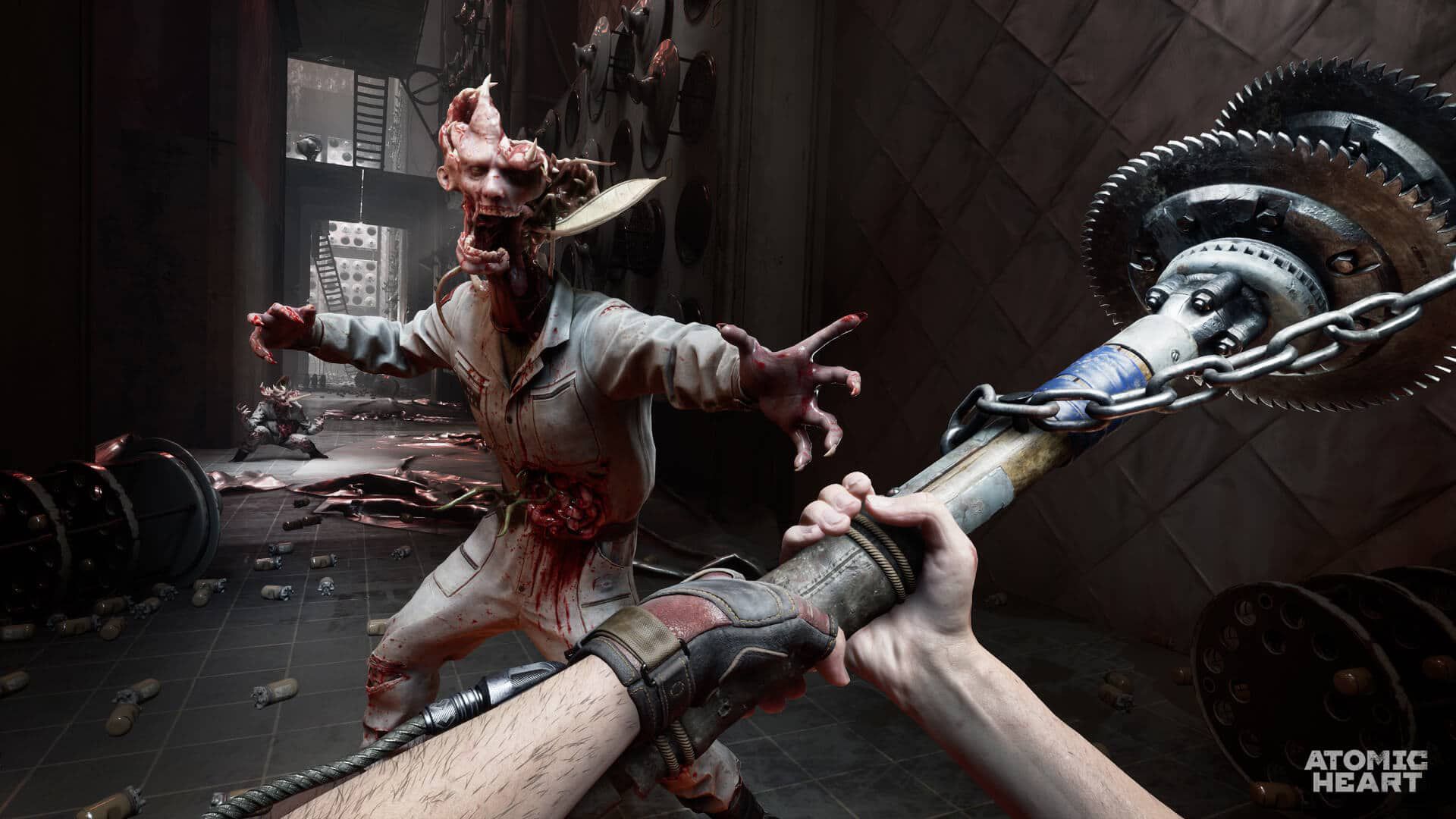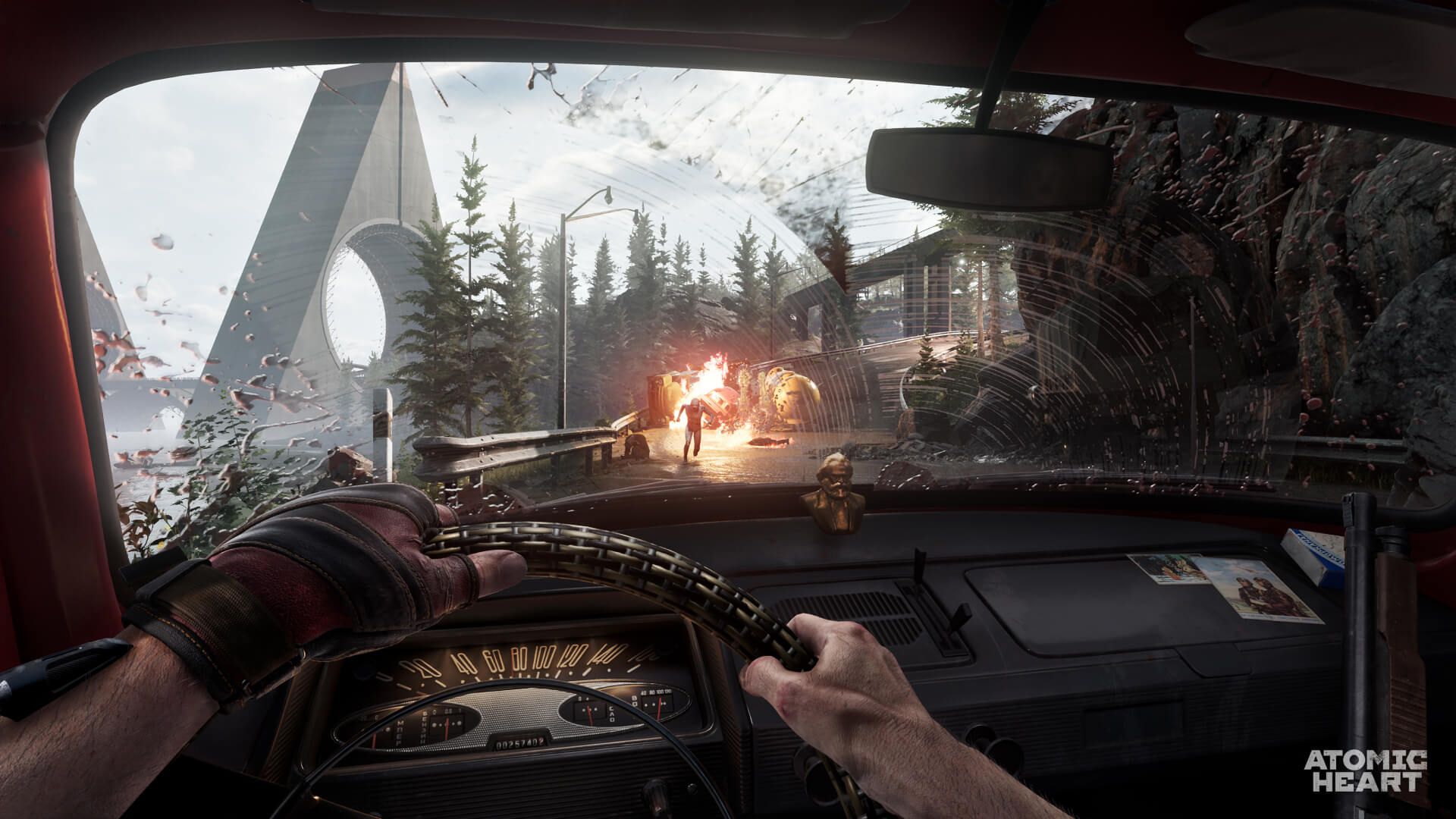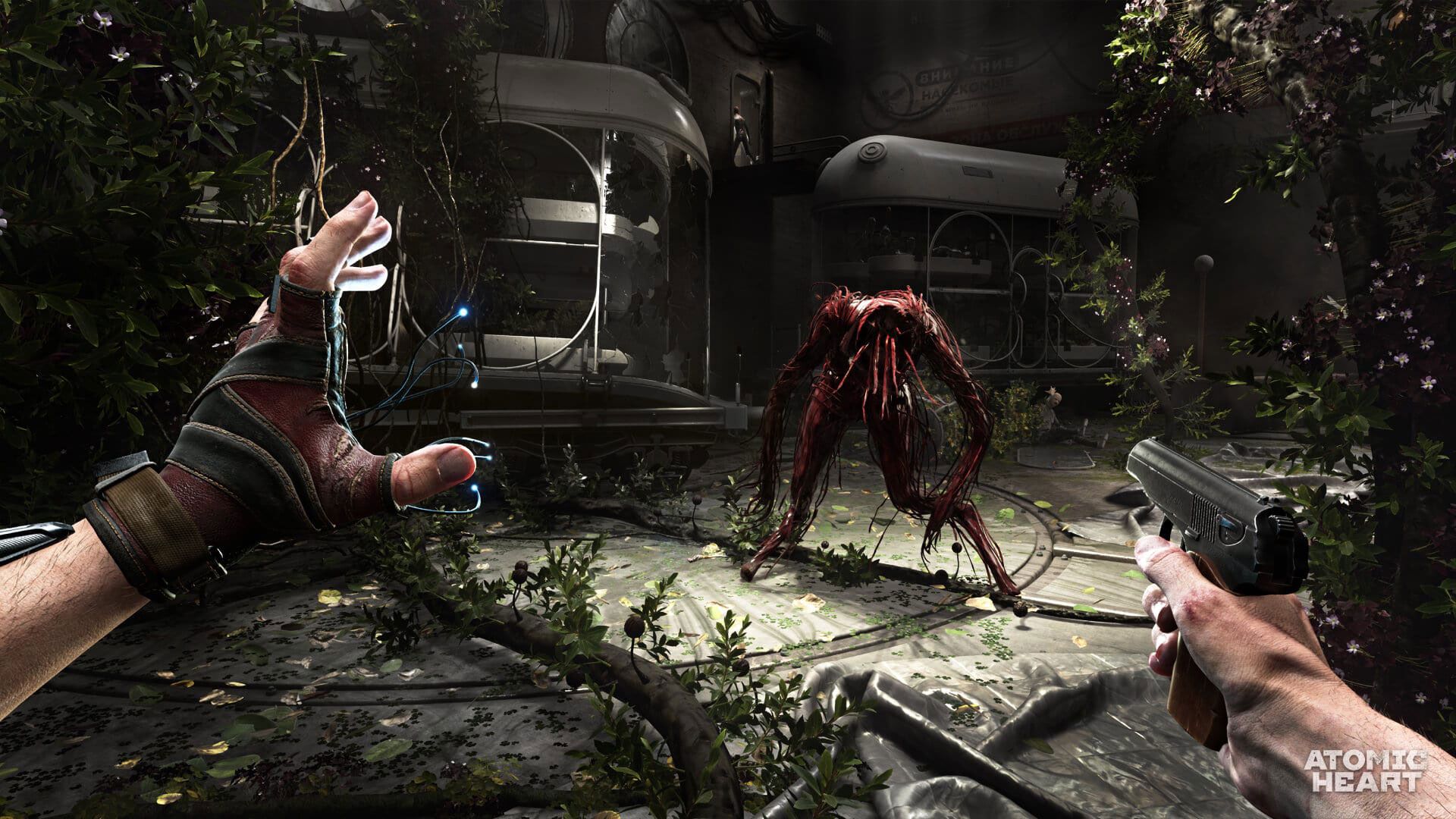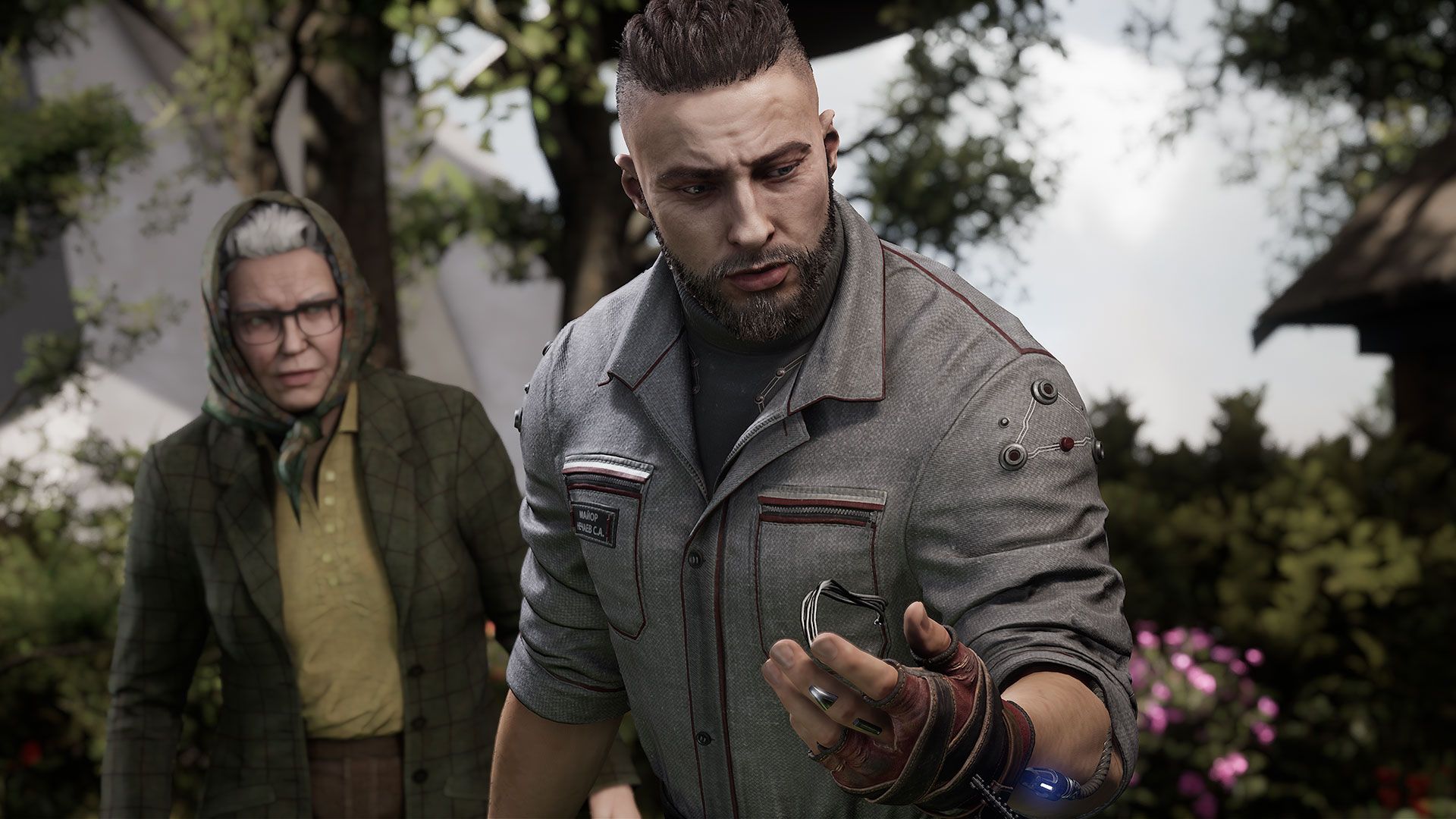The future of Russia is a bright utopian paradise, nothing but blue skies and collective freedom in the shining hopeful year of 1955. Doctor Sechenov has peeled back the veil on the scientific mysteries of a substance they refer to as Polymer, opening up several new fields of study and creating a workforce of robots. The Kollektiv system unites the robot's minds together and in a few short days every citizen will get to join the 2.0 upgrade, thanks to a biologically-compatible version of polymer that enables the creation of a worldwide neural network. Russia is on the verge of implementing the man-machine interface, allowing everything from thought-controlled devices to fully-downloadable learning, and the world will practically have to follow in its footsteps soon after. Assuming the sabotage that suddenly causes all the robots to identify humans as a threat doesn't put a damper on the plans, of course.
Atomic Heart is a first-person adventure/shooter set in an alternate history Russia, where the bright promise of tomorrow has suddenly crashed head-first into the unexpected consequences of poor cyber-security. I recently got to play several hours of the game, starting from the incredible opening sequence, to a level-based run through a lab, and then dropped into the overworld with a nice arsenal upgrade to test the advanced combat options. Atomic Heart is aiming to do a lot of things over the course of its story, regularly switching up tone, gameplay and settings, and the bits I got to play demonstrated a large number of interlocking systems to explore it all with.
The first change in style comes at the beginning. It's a beautiful day in the city and Major Nechayev is relaxing with a lovely boat ride down the river on the way to an important meeting. Birds fly through the open blue skies and people are enjoying a festival atmosphere, and when the boat reaches its destination there's a pleasant stroll past performers and excited crowds, not to mention offers for free headsets of the new polymer interface. It doesn't go live for another day or so but everyone knows it's coming and with it, an incredible future of knowledge and prosperity.
While for an action game this can feel like a slow beginning, there's a huge amount of world-building going on and it's all fascinating. Everything has been designed within an inch of its life, including seemingly inconsequential details like the spiral screw-propellers of the boats, and old models of robots mingle with the new ones because the speed of technological advancement hasn't given them time to wear out yet. Meanwhile people are chatting everywhere, and it's easy to get lost exploring their conversations to learn about the world. It's all optional once off the boat; you can walk straight to the meeting with only a small number of mandatory cutscenes to get the Major up to speed plus inform the player through conversation of his narratively-required missing memories, but the creepy-weird robots, character side scenes and alternate-history tech design are all sitting there being too interesting to pass up.
Soon enough, though, the first change in style hits as everything goes horribly wrong, and Major Nechayev is trapped in a compound overrun by the sabotaged AI of formerly-helpful robots. Armed only with an axe and shotgun, plus the abilities granted by the talkative AI in his polymer glove, the Major needs to fight his way back to the surface and figure out just exactly how everything fell apart this badly, all while scavenging as much as he can along the way to upgrade his arsenal into something a little more deadly.
There are a good number of systems all working together, both for the Major and the robot attackers, none of which are all that obvious at the start. The shotgun is a shotgun, it shoots a bunch of pellets just like a shotgun does, but you've only got a tiny amount of ammo so it's best ignored for now. The axe has a good chop attack and an alternate power-swing, and the glove makes scavenging easy by holding down the search button and sweeping the room. Beat on a few robots, though, and the first few upgrades start showing up. The first one actually arrived back in town, which is an alternate viewing mode that can view people and robots through walls, albeit as a fuzzy blur, and also gives an indication when a robot is about to give a power-attack that will knock the major down while doing terrible things to his health bar. The polymer glove gets the sci-fi upgrades, like the EMP blast that can temporarily disable the daisy-cameras or stun an attacking robot for a few exploitable seconds. Later upgrades include levitation, polymer-goo and freezing, and most can be chained together in some way. An example from my demo time was the polymer-goo, which can not only be electrified to act as a trap, but also levitated to make it harder to avoid. Most systems interact and a good fighter will need to play with them to discover the most entertaining ways to destroy their attackers.
For a more straightforward approach, though, there are a large number of guns and melee weapons available and all of them have upgrade options. The scrap harvested while exploring can be spent at the occasional kiosk to craft any number of things, from new weapons to ammo to upgrades, and the weapons have multiple options to experiment with. The first weapon, the axe, starts off with a metal blade and can be upgraded to ceramic, but the metal blade has its own set of special attacks and bonuses that might make it worth not switching over to the fancier material. Guns also have a number of parts, including stock, barrel and other gun-type bits, frequently with multiple versions to choose from and all with differing abilities to chase after depending on player preference.
Meanwhile the robots have their own interconnected systems, as demonstrated in the second half of the demo in the open-world section. It's still a beautiful day in Russia up above the bunker, but landscape is more war-torn than idyllic, and the no-longer-peaceful robotic caretakers are ready to rampage. The alert level is generally low and surviving to the next area means you'll want to keep it that way, but one fight leads to another and the alert level keeps on rising as it does. The trick is knowing that the daisy-cameras are everywhere, but simply blasting them won't help. While Kollective 2.0 has fallen apart before it launched, the 1.0 version is fully functional and one robot picks upon the alerts of another. If a camera goes down that's a sign that something is wrong, and the hives with the repairbot-bees will just put it back the way it was anyway. Knowing how the robot systems interact can help will help with the tactics, as disabling the right systems in the best order can keep the fight under control. A little mayhem is fun, even if things can easily get out of hand, but it's open world up there away from the horrors of the bunker, so running away or grabbing a car to punt the enemies into the stratosphere are both viable options.
While the open world isn't particularly huge it's big enough to hold a number of bases and bunkers, and figuring out Atomic Heart's mysteries involves visiting all of them. Each one is designed to feel different from the others, some rewarding stealth or straight-up combat, others being more horrific, and even a few puzzle-oriented areas. Everywhere I was able to see looked fantastic, with a lot of care going into the design-work of the science fiction elements to make them fit in with the time period of the 1950s and the Eastern Europe/Russian style. There are even cartoons running on the TVs, which at this point just feels like showing off (in a good way). There's a good long journey ahead to get to the bottom of the robot sabotage, the Major's missing memories, and even finding out what the name "Atomic Heart" actually refers to, and chasing down all the extras or enjoying the scenery won't make it pass any more quickly. Whatever it all means, though, Atomic Heart is shaping up to be a unique adventure with incredible style, and no matter how it turns out will be worth paying attention to for the wild ride ahead.





